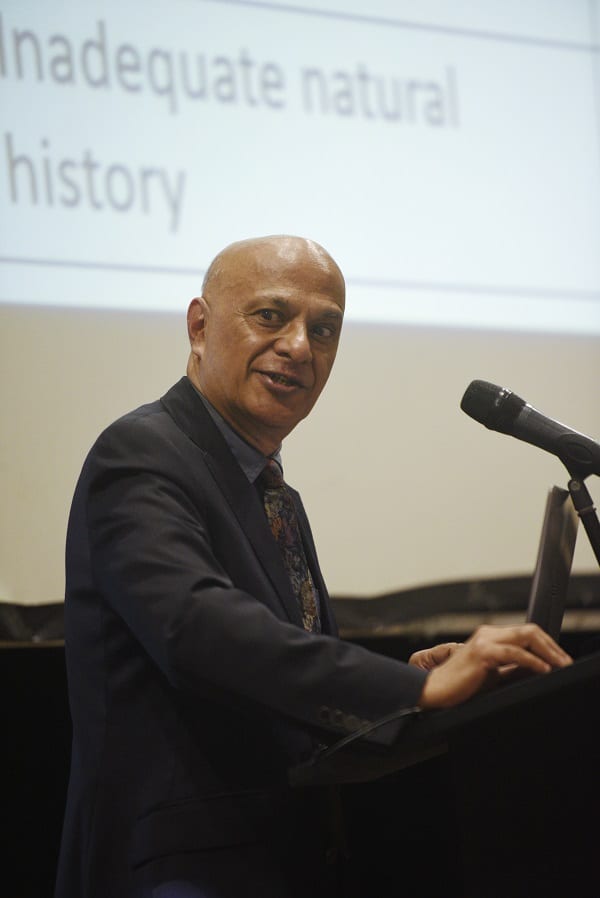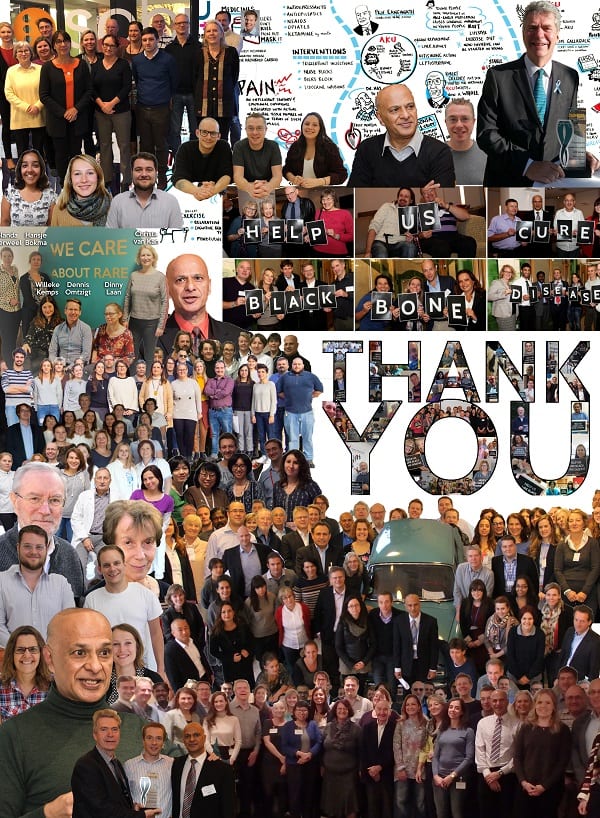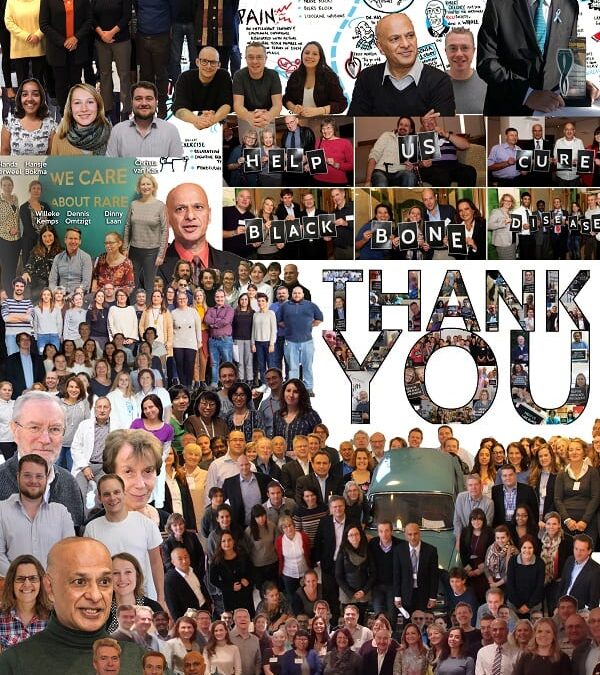It seems like yesterday when I met Robert Gregory. He came to the hospital with his niece who was referred to exclude alkaptonuria (AKU) – before I knew it Robert had registered an AKU Society with the Charity Commission, with me as Medical Director/Co-Founder – my AKU journey had begun in 2003.
At the time I was running three weekly hospital clinics, leading an analytical section in the laboratory, giving around 30 lectures to medical students yearly, hosting three special study modules for medical students, lecturing colleagues within and outside hospital, establishing research into obesity and diabetes (my PhD interests from Surrey), writing papers for journals, writing grant applications, supervising MSc research projects – a busy life! Fortunately, the AKUS was joined soon after by the young Nick Sireau, father of two children with AKU. Swedish Orphan (Sobi) provided a grant for an AKU website, helping support patients from across the World.

Professor William Gahl from the National Institutes of Health (NIH) visited the UK and we had high hopes that nitisinone might soon be available to treat AKU following the NIH trial. I remember the hopeful speeches in the House of Lords, as well as the First International AKU Workshop (15 people) – small beginnings! The constant support from the NIH and Dr Wendy Introne who shared the AKU experience in NIH with us will always be appreciated.
Enter the outstanding scientist – Professor Jim Gallagher from the University of Liverpool joins the AKU team in 2006 – the first AKU mouse model of ochronosis was developed and was a clear demonstration that nitisinone worked in these AKU mice. The strong basic science support has been key to progress in our group.
In 2005 Nick and I were shown the door at the Department of Health HQ in London. We wanted help in finding out how many AKU cases there were in the UK; clearly, we were not credible. We therefore went about developing the basic and clinical research in AKU. I want to remember the incredible generosity of three patients with AKU who sadly died but left their bodies for further study – we learnt so much from their generosity, which has made all the progress possible.

Soon there was a big blow for AKU efforts – the NIH trial was inconclusive after a three-year study with nitisinone.
Persuading the pharmaceutical company making nitisinone, Swedish Orphan Biovitrum (Sobi), to come on board with us for a new clinical trial was challenging. It also almost sent me to jail in Stockholm airport – because I had a green laser pen on me, which I had used to present data at Sobi!
In 2011 we applied to become a National AKU Centre (NAC) in Liverpool and also applied to the European Commission for a research grant in to new nitisinone trials. Our efforts to have Liverpool designated as a National AKU Centre arrived on 1st April 2012 – April Fool’s day! The official opening of the centre was in January 2013 – Robert was guest of honour. The NAC has been incredibly successful with bringing together a large group of hospital specialists to provide a one-stop care to patients from England and Scotland and make nitisinone available as treatment for the first time anywhere in the world. I’m very proud of our group, including the AKU Society which has been central to all our efforts. The patients have been wonderful and appreciative and it has been a pleasure to care for them over the years.
Unbelievably in May 2012, the European Commission provided us with a huge grant for clinical trials – Nick was in Liverpool on the day we heard – I told him on the road corner from the Sherrington Building in the University of Liverpool, and we hugged each other. Once the European project started, recruitment for SONIA 1 in Slovakia was proving difficult, and this led to Nick and I to take a trip to Piešťany. We took a train ride from Piešťany to see a doctor who instead of helping with recruitment gave us a very good lunch and advised me to pray to Christ with noon time carol singing – perhaps she thought that would improve our chances of recruitment!

I also remember the ending of SONIA 2 – in chaos. This was due to the first snowfall in Siena in 20 years. We were lucky to have only had a short delay and all of us made it home safely. There have been many, many heroes along the way in SONIA 2 and it has been a fantastic team effort. The tireless work by the AKU Society, and PSR in Amsterdam, has been instrumental in completing the trial successfully.
I met colleagues at Sobi on Midsummers day in Stockholm (21st June 2019); the SONIA 2 data was convincing, and everybody agreed the study was a success. Sobi agreed to apply for marketing authorisation with the European Medicines Agency (EMA). The culmination of a decade of effort. The whole Sobi team, changing over the long study period, have been exceptional guiding the group. We now need to work out how to ensure equitable access to medications going forward.
Without realizing it, it was now time for me to retire from full-time working. I have been working part-time since January 2018. On the 1st February 2020, I handed over the Clinical Directorship of the NAC to Dr Milad Khedr – sad but proud of what we have achieved. I plan to continue as part-time consultant and help in any way I can.
I heard in the second week of February 2020 that Sobi have submitted all documents to the EMA requesting them to license nitisinone for AKU – great news.
Going forward there remain challenges – is a cure possible for AKU with gene therapy? Can we help patients taking nitisinone with less dietary protein restriction? Can we make nitisinone access more widely – in UK, Europe and the world?
The lesson I learnt in my AKU journey is that to solve a problem quickly, it is necessary to work with people rather than go it alone. I have learnt so much from the people I have worked with. I will always be grateful to have had the opportunity.

